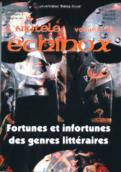“Romans à tiroirs” d’hier et d’aujourd’hui : parodie et expérimentation romanesque
Ancient and Modern “Romans à tiroirs”: Parody and Literary Experimentation
Author(s): Maria Eduarda KeatingSubject(s): Literary Texts
Published by: Universitatea Babeş-Bolyai
Keywords: Roman à tiroirs; European Novel; Storytelling; Self-consciousness; 18th Century Literature; Postmodernism.
Summary/Abstract: According to dictionaries of literature, the Roman à Tiroirs is a kind of novel wherein the main story is constantly delayed and interrupted to make room to new stories and new narrators, in the tradition of The 1001 Nights or the Decameron. This narrative model enjoyed a great success in Europe during the 17th and 18th centuries, with major works like Don Quijote, Tristram Shandy or Jacques le Fataliste and was somehow “forgotten” with the rise of Romanticism and Realism and the success of 19th century’s novels, which introduced a new model in the writing of fiction. This essay considers those 18th century’s romans à tiroirs both as recreations of the traditional art of oral storytelling (the pleasure of hommo narrativus) and as essential texts using parody to discuss the craft of writing narratives. Therefore, they have played a major part in the development of the European novel. It also studies some contemporary authors – like Perec, Calvino or Pamuk - who appear as “postmodern heirs” of the roman à tiroirs, using the multiplication of stories and the discussions on storytelling to experiment new modes of writing and raise questions about the status of storytelling in the novel, the pleasure or rejection of stories, the “boundaries” between fiction and representation, the reflections on literary writing and about the novel as a genre in contemporary society.
Journal: Caietele Echinox
- Issue Year: 2009
- Issue No: 16
- Page Range: 156-165
- Page Count: 10
- Language: French
- Content File-PDF

